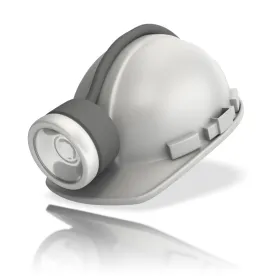MSHA issued a single enforcement action alleging the contractor violated 30 C.F.R. Section 56.15005 when a miner exited the cab and descended from a crane on a lowboy trailer. The standard requires safety belts and lines to be worn when persons work where there is a danger of falling. Specifically, the MSHA inspector issued the enforcement action because he saw the contractor’s employee descend along a narrow fender that was not designed for use as a walkway and because the employee had not used fall protection such as handholds. The employee testified that he maintained three points of contact while exiting his cab but conceded that handholds were not available when he crossed the fender of his truck. The area the employee crossed was approximately seven feet above the ground, six feet in length, three feet wide, and covered in anti-skid material. At the hearing the contractor argued the miner’s method of egress was consistent with safe access standards issued by the International Organization for Standardization (“ISO”) and incorporated by MSHA. The ALJ found the contractor failed to provide certification of ISO compliance and found a violation.
The contractor then appealed to the Commission, arguing lack of ISO documentation is not a proper basis for a violation of the standard. The contractor also argued the ALJ improperly shifted the burden of proof by requiring the contractor to establish compliance rather than requiring the Secretary to establish a violation.
On appeal, the Commission noted ISO 2867 had been incorporated into MSHA’s guidance through PIB No. P.10-04. ISO 2867 requires all access systems to be slip resistant and encourages the use of three-point support when ascending, descending, or moving while more than one meter above ground. ISO 2867 also notes two-point support is acceptable for stairways, ramps, walkways, and platforms. The ALJ below agreed the method of egress was consistent with ISO 2867 but held operators (or contractors) to provide documentation certifying that equipment is ISO compliant and the contractor failed to provide such documentation for the crane at issue. As such, the ALJ found a violation of the cited standard.
Ultimately, the Commission (in a 5-0 decision) found the ALJ improperly shifted the burden of proof by requiring the contractor to prove the method of egress was compliant – thus establishing a non-violation – rather than requiring the Secretary to meet his burden of proving it was unsafe – and thus establish a violation.
Importantly, however, the Commission noted the ALJ was required to consider the effect of PIB No. P.10-04 for what it is – a public guidance document that informs the agency’s judgment on the danger of falling from mobile equipment. Specifically, the PIP expressly stated manufacturers may comply with these industry standards “in addition” to the measures set forth in the PIB and MSHA inspectors may use certification documents to ascertain whether operators are “providing safe access, fall prevention and fall protection.”.





 />i
/>i
